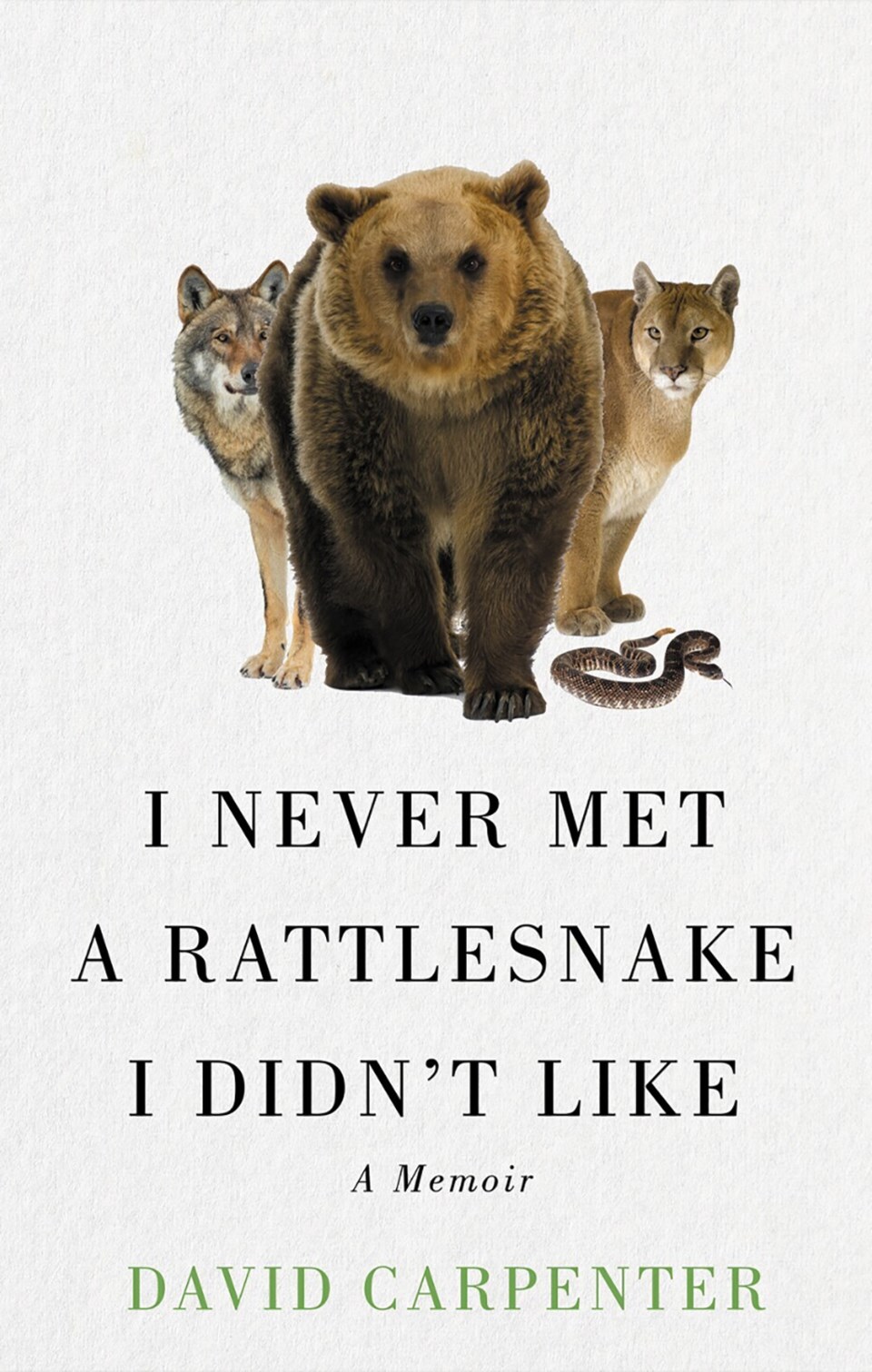“I Never Met A Rattlesnake I Didn’t Like: A Memoir”
By David Carpenter
Published by Thistledown Press
$24.95 ISBN 978-1-77187-227-0
When I discovered Saskatoon’s David Carpenter was releasing a new memoir, I Never Met A Rattlesnake I Didn’t Like, I immediately wanted to review it. I knew it would be illuminating, well-written and downright fun, because this is what I’ve come to expect of Carpenter’s work, whether fiction or nonfiction, and this latest title has cleared the bar. Carpenter is a bonafide storyteller and a “rabid conservationist,” and his entertaining stories and mind-broadening research into “this ancient cafeteria called nature” — and who and what threaten It— is an epiphanic read.
The memoir is an homage to “creatures with Fangs, Claws, and Other Pointy Things,” from mosquitos, snakes and weasels to the apex predators: wolves, cougars and bears. Over 18 mostly short chapters that “follow the chain of predation,” we learn about Carpenter’s lifelong passion and reverence for the winged, finned and four-legged. “I seem to have a thing for predatory animals,” he writes. “My journals are full of them.” He’s been keeping field notes for 50 years regarding his “sightings of and adventures with predacious creatures,” from boyhood memories of fishing on Lake Wabamun, Alta. to adult interactions with rattlesnakes in Arizona and black bears in Saskatchewan.
Carpenter is an avid fly fisherman, and his beloved brown trout get copious attention, too, as does Little Bear Lake, where in 1997 he and his wife, Honor Kever, bought a ramshackle cabin and transformed it into an idyllic retreat (difficult septic tank notwithstanding), where fish and friends are never far away, they planted trees and bushes, and “Eagles and ospreys patrol the skies.”
Expect offbeat, like Carpenter’s rescue of a drowning dragonfly (“a biplane with enormous opalescent eyes”) and his desire to see alligators and rattlesnakes in the wild (missions accomplished in the United States). When the author has had fun writing, the reader has fun too.
Expect an education. I learned much, including the differences between weasels, pine martens, fishers, badgers and wolverines. “In the hockey game of nature, [wolverines] deserve a lot of time in the penalty box.” And until recently, mosquitoes (“draculating fiends”) killed “more than a million people annually,” but “Malaria-bearing mosquitoes certainly delayed the destruction of the Amazon rainforests,” too. Carpenter’s merging of anecdote and fact works.
There’s also much here I personally relate to, the “near-galvanic pain” of a black widow bite for example I was bitten in Sooke, B.C. and the “burgeoning” presence of wild pigs (I found a skull near Middle Lake, Sask.). Cougars roam my current neighbourhood. Though long thought to be loners, Carpenter enlightened me: sometimes cougar do “socialize in diverse groups.”
This book is a terrific conversation starter. Where did our fear of apex predators begin? Perhaps with the Goldilocks story: entitled girl breaks into bears’ home. “[Goldilocks] reminds us all too well of who runs the show in our present day Anthropocene. The bears’ habitat is her playground. The Goldilocks story sums up what human beings have done to the terrestrial wilderness, the ocean, the atmosphere and now the climate.” Maybe, Carpenter posits, “Goldilocks is us.”
This book is available at your local bookstore or from the Saskatchewan Publishers Group www.skbooks.com





